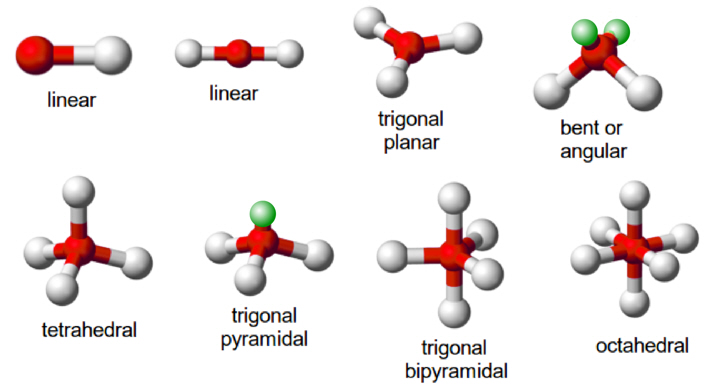Chemical Bonding and Shape of Molecules


INTRODUCTION
Electronic theory of valency was given by Gilbert N. Lewis and Walther Kossel. This theory of valency explains the main cause of chemical combination and combining capacity of different elements on the basis of number of electrons present in the outermost orbit and tendency to lose or gain the electron. The terms involved in electronic theory of valency are discussed below.
Valence electrons and Lewis dot symbol
The electrons present in outermost orbit of each and every element are called valence electrons and that shell is called valence shell. The valency of every element is explained on the basis of number of electrons present in it. All the valence electrons can be represented by dots or crosses and are known as Lewis dot symbol or Lewis electron dot symbol.


Fig: Lewis structure of hydrogen atom Fig: Lewis structure of oxygen atom
OCTET RULE
Lewis and Kossel, 1916 observed that all the atoms of noble gases ( except H or He ) contain 8 electrons in their outermost orbit. All other atoms during chemical combination try to adjust their electronic configuration like nearest noble gas by losing or gaining or sharing the electron. Due to which chemical combination occur and this rule is called octet rule.
Though, octet rule successfully explain about the bonding in most cases it is unable to explain the bonding in PCl5 , BF3 , etc.
POSTULATES OF ELECTRONIC THEORY OF VALENCY
In order to explain the combining capacity of atoms and the main cause of chemical combination, Lewis and Kossel, in 1916, put forward a theory called electronic theory of valency. The major postulates/assumptions of electronic theory of valency are -